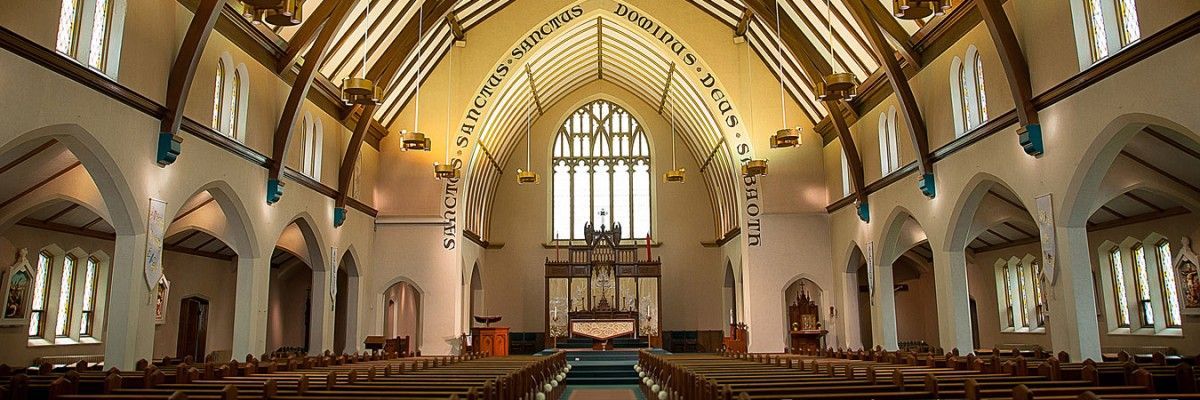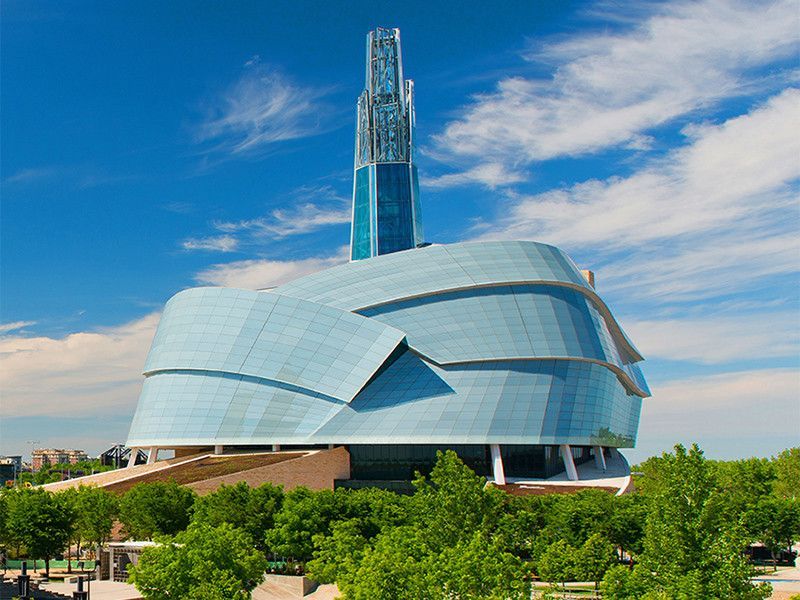
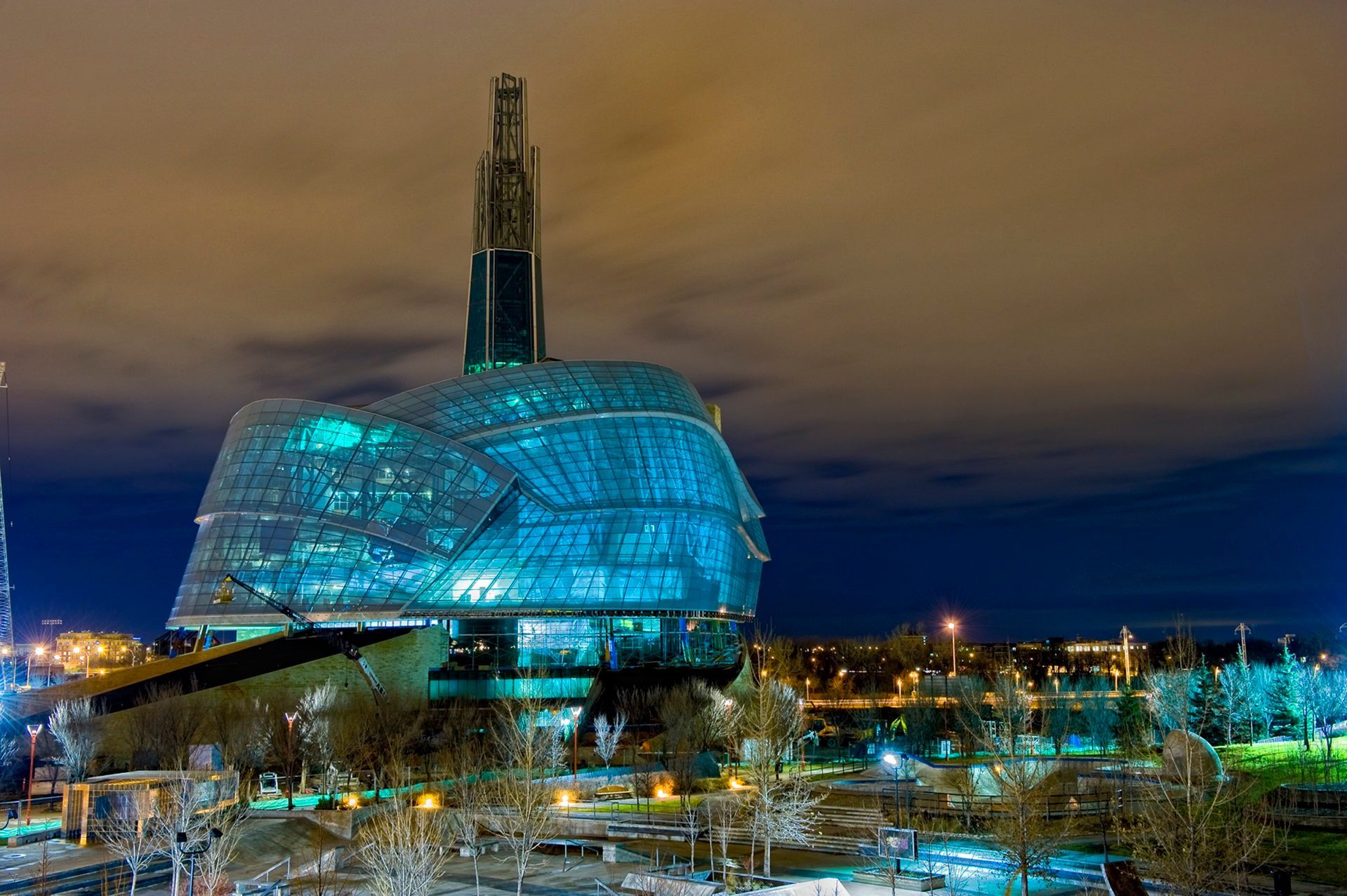
Creator: JOSELC Copyright: JOSEL MEDIA
Created by an astonishing fundraising program lead by the very determined Gail Asper and a commitment from the federal government to designate it as a national museum it is notable as a national learning center. This architectural wonder is dedicated to highlighting human rights around the world. It serves as a metaphor for much of what Winnipeg is noted for: a commitment to the arts, social justice, multiculturalism and education.
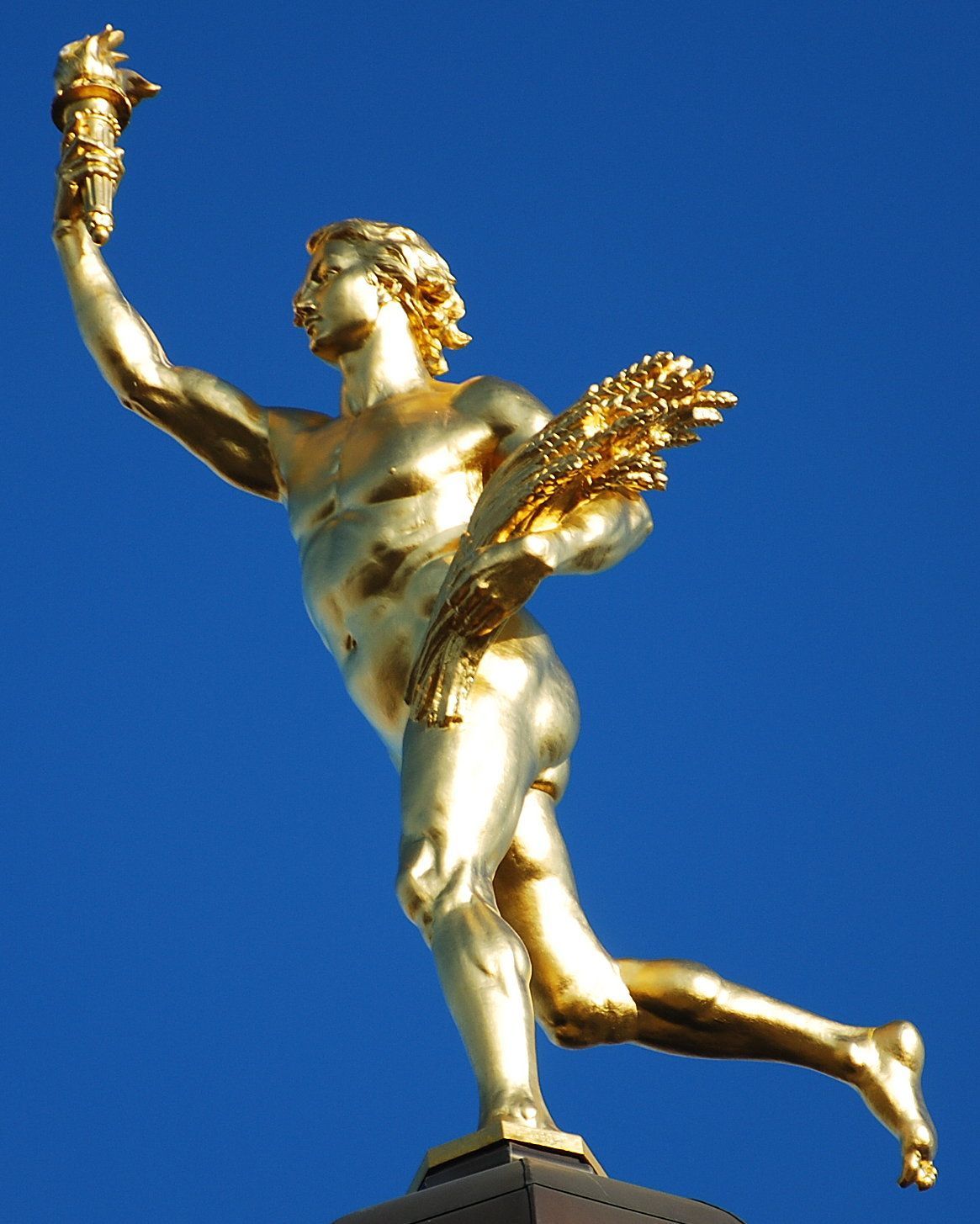
Photo from CHVN Radio Written by Vanessa Friesen Monday, Oct 17 2022
One of the earliest pieces of the city’s public art is the iconic Golden Boy. Perched atop the dome of the provincial legislative building, and designed in 1918 by Georges Gardet, it is over 17 feet high. The bronze statue features a nude young man reaching northward with a torch in one hand a sheath of wheat in the other. It stands for goals for prosperity and entrepreneurship- characteristics of many of Winnipeg’s early people: Indigenous peoples, Ukrainians, French, Poles, Scots and many more.
It is the entrepreneurial spirit that was behind the impetus for Winnipeg’s enviable public art. A walk around this wonderful city confirms its dedication to urban art and celebration of the city’s history and accomplishments.
Winnipeg’s public arts installations were funded by outstanding and enviable fundraising from all segments of the city. This project was spearheaded by prominent local families and strong support from generous everyday citizens. The array of public art installations enrich Winnipeg’s urban landscape and reflect the community’s spirit and pride for cultural expression.
Internationally renowned Chinese artist Ai Wei Wei contributed the incredible piece “Forever Bicycles“ to the area surrounding the Canadian Museum for Human Rights.
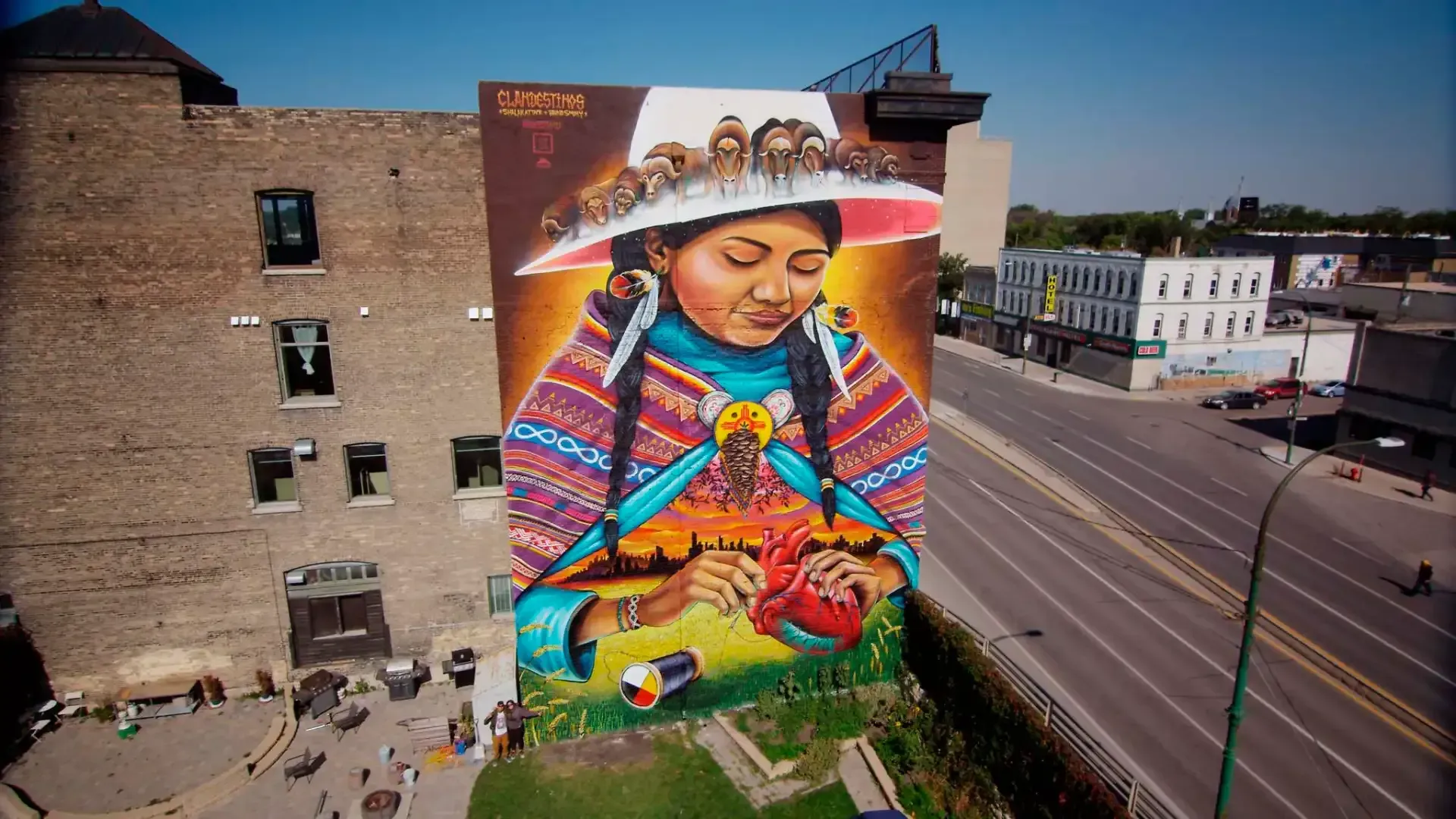
Nic Kriellaars photo Mending is a 50-foot tall mural on the wall of Winnipeg Centre Vineyard Church. The subject looks down at us with love, sorrow and beauty as we enter the North End. -From Winnipeg Free Press january 4th, 2020
Adding to Winnipeg’s unique charm are its renowned burger joints. One of my favorites is the famed Salisbury House. Famous for their juicy burgers, called “Nips” a classic order at the “Sals” was a nip and chips. Open 24 hours, the food outlet’s advertising song “Under the Little Red Roof” regaling its famous duo is pure nostalgia for me. Here is their legendary jingle performed by a family friend as she remembers it.
CLICK ON THE TRIANGLE ICON BELOW TO PLAY THE JINGLE!
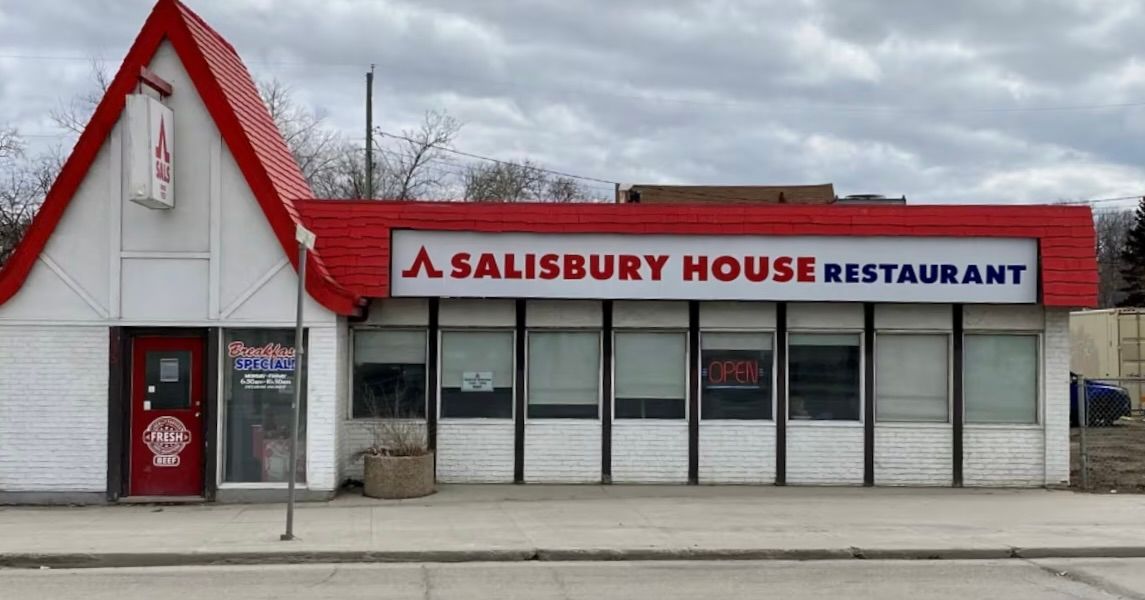
There are countless stories surrounding the “Sals” mostly involving late night, drunken visits after the pub. One friend of mine recalls a “Sals” incident.
- - -
‘Maria’s’ (pseudonym) Story:
“We went to the Salisbury House on Pembina Highway about two in the morning after the disco- we decided to have a nip and some fries and maybe some coffee to sober up lol
We decided it was a good idea at the time to stand up and go without paying, we called it “eat and bolt”!
Crazy times!!! I don’t know why we did it. I still owe them the money ha ha. My first and only time I’ve done that.🤫”
- - -
Tom’s (pseudonym) ‘Right of Passage’ Story:
Currently a well respected Winnipeg resident, Tom (pseudonym) fondly recalls an impactful “Sals moment.”
“I was living in Winnipeg, attending Kelvin high school, and I got my drivers license in mid March.
Every weekend I would go with some friends to dances at community clubs at River Heights, Crestwood, Saint James, Civic Center, and University of Manitoba Student Union building. After the dances, we would go to either the A&W or the Salisbury House on Pembina Highway. In those days the Salisbury house had carhops who would come out in the middle of winter and deliver your order on a tray which you put on the side the car’s window. After your drinks came to the car, you would roll the window up with the tray on it in order to keep the car warm. If you didn’t get the drinks in quickly enough, the mugs would become ice cold.
The first day my parents allowed me to drive their car without their supervision was on a Friday night. After the dance we attended, three friends and I went to the Salisbury house and had a big nip, a chocolate donut and a root beer.
The car was parked in one of the spots near the building where the food was prepared. As I pulled out to leave, the car next to me also pulled out and backed into the side of the door of my parents’ car. This caused quite a bit of damage. I then had to go home to explain to my parents how, on my first time with their car, I had been in a car accident in the Salisbury House parking lot…
…it didn’t happen again.”
- - -
Sassy’s Story:
My Salisbury House story leans in a little different direction. It was July of 1975. Unlike the frigid cold of Winnipeg winters, the summers are hot and humid. My home was old, built on a twenty five foot lot on an elm tree lined street. Needless to say, this two story “historic property” was long on character and short on HVAC! I was in my home and the heat was so stifling that I could not sleep. After tossing and turning until midnight, I decided to head to my air conditioned local Salisbury House that was conveniently located right around the corner.
I sat at the counter on one of the backless seats and ordered a soft drink. The server was friendly and we chatted about the weather and our favorite tv shows. I sat happily cool and enjoying my solitude until the server returned and interrupted my reverie. She placed a piece of the Sal’s signature flapper pie in front of me. “Compliments of the gentleman at the far end of the counter” she quipped. I took this as a compliment and so gave a smile and a quick wave to the guy. I enjoyed that delicious desert and left my seat and headed home.
Fast forward to midnight the very next night and again my house was sweltering. Once more I sought a reprieve from the oppressive heat and returned to the Salisbury House and found the very same counter seat and placed the identical order. The same woman served me and we took up a short conversation where we left off. And then: Guess what? She placed an entire flapper pie in front of me!!
Talk about one-upmanship: the server told me that that gentleman had been there the night before, and witnessed the single piece of pie the other guy had given me. Well, tonight this second gentleman decided to up the ante and sent over an entire pie!
I thanked him for his kindness and generosity and we had a good laugh before I left. Great memories at an iconic Winnipeg burger joint.
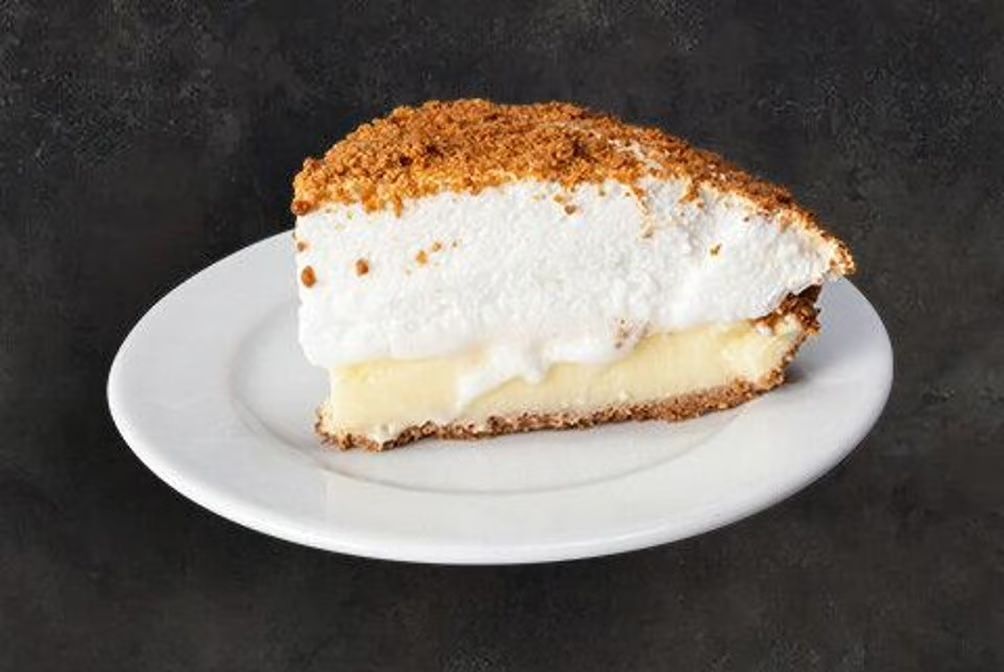
Winnipeg, a city rich in history and culture, is known for its public art, including the iconic Golden Boy and Ai Wei Wei’s “Forever Bicycles.” The city’s entrepreneurial spirit is evident in its vibrant arts scene and beloved burger joints, particularly Salisbury House, famous for its “Nips” and “Chips.” Salisbury House holds a special place in the hearts of many, including me. To this day, it serves as a nostalgic gathering place for late-night meals and cherished memories.
Sassy Blog

